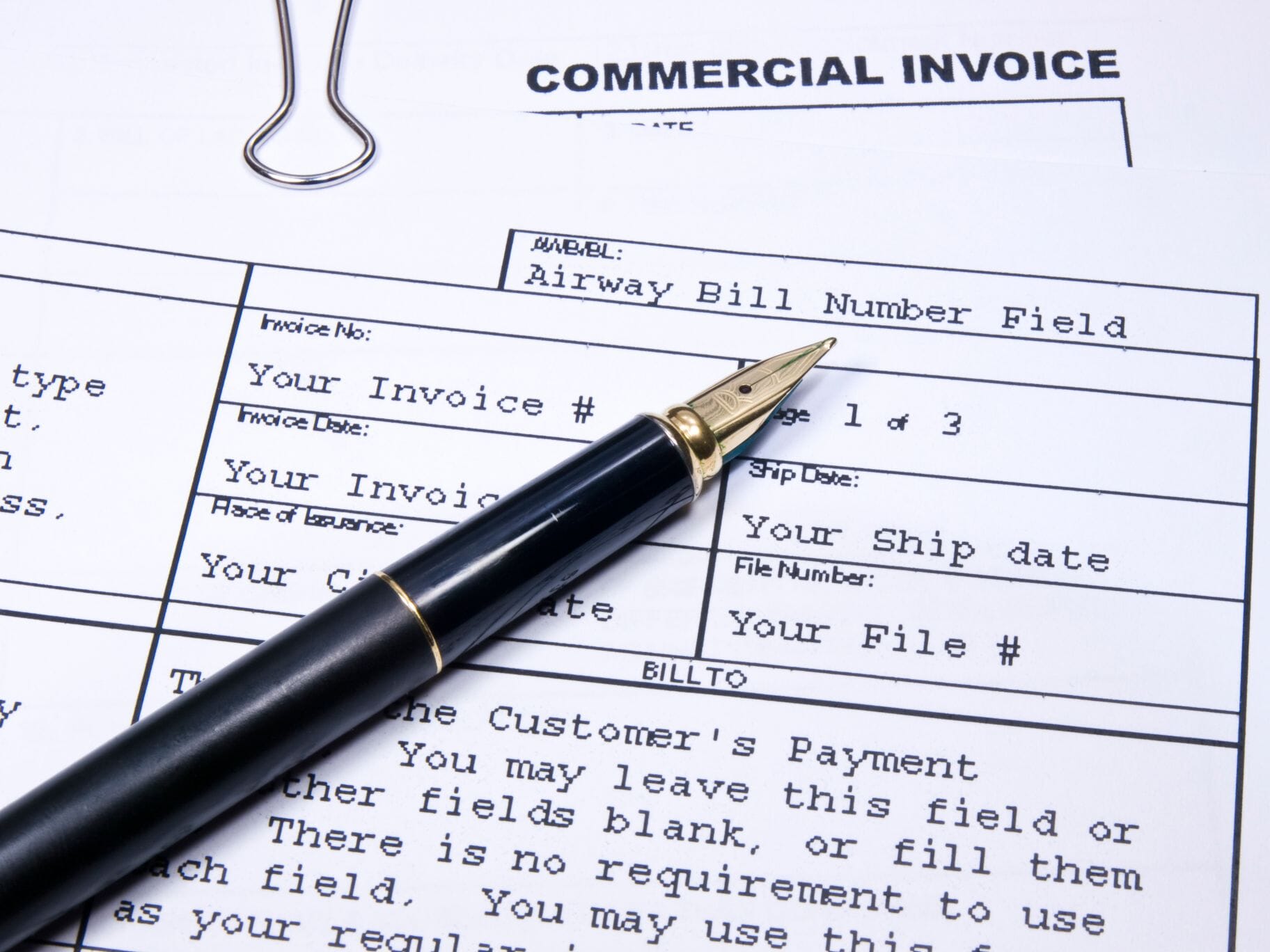And where do you get the information? One of the most frequent requests that we get after one of our customs training sessions is for a copy of the commercial invoice requirements. It may well be because even when using third party brokers to clear shipments, this is one of the key documents that companies need to produce in preparation for shipment.
With that in mind, we thought that it would be useful to outline some of the commercial invoice key requirements in a simple post.
Key requirements
| 1. | Name, Address and EORI of sender / consignor | The Economic Operators Registration and Identification (EORI) is a registered number that businesses and people wishing to trade must use in all customs procedures when exchanging information with Customs administrations. It can be obtained by contacting your customs authority (e.g. Revenue in Ireland or HMRC in the UK) and is generally linked to a VAT registration. It is company and jurisdiction specific. |
| 2. | Name, Address and EORI of buyer / consignee | See point 1. |
| 3. | Name, Address and EORI of Receiver (if different from the buyer) | See point 1. |
| 4. | Invoice date | Date of the invoice |
| 5. | Terms of Sale / Incoterms | Published by the international Chambers of Commerce Incoterms are a specific set of rules to guide responsibilities in the trade and sale of goods. They define the responsibilities of parties to the trade including responsibility for export and import processes, responsibility for freight costs and insurance. We have published a separate blog on Incoterms which you can find here. |
| 6. | Currency of Invoice | Currency of the invoice that is being issued |
| 7. | Mode of Shipment | Details of how the shipment is made – road / sea / air |
| 8. | Quantity of Items | How many units of the item are being shipped |
| 9. | Description of Items, including HS code (including nett weight and quantity) | Full description of items plus HS (Harmonised System) code. The World Customs Administration, administers a commodity-classification system that is called the International Harmonized System (HS): the code is used by all countries globally to classify all imported and exported goods |
| 10. | Reason for export | Indication of whether products are being exported for Sale, temporary export, return for warranty or other reason. |
| 11. | Unit of measurement | Qualification of the units – pallets, boxes, crates etc |
| 12. | Unit price | Unit price based on the valuation method being used |
| 13. | Total price | Unit price multiplied by the number of units |
| 14. | Extra charges | Details of any extra charges outside of the unit price – for packaging, insurance etc |
| 15. | Certifications | Details of any certifications relevant to the shipment – SPS, fumigation, veterinary etc |
| 16. | Country of origin | Details of the origin for customs purposes of the goods being shipped. This refers to the origin of the goods and not to the origin of the shipment. The origin of goods usually refers to the manufacturing origin unless the goods have undergone such a transformation as to change the country of origin. |

These 16 items are typically used by brokers and clearance agents as the source information when preparing declarations to customs on export or import, as the goods cross international borders. It is important for you to ensure that the information provided is correct, as misdeclarations can result in incorrect declarations, delayed shipments, fines and other penalties.
If you have questions on commercial invoice requirements, or indeed any of the above, reach out to us for a consultation, or consider signing up for some of our public or company specific training.
Supply Chain Enabled
